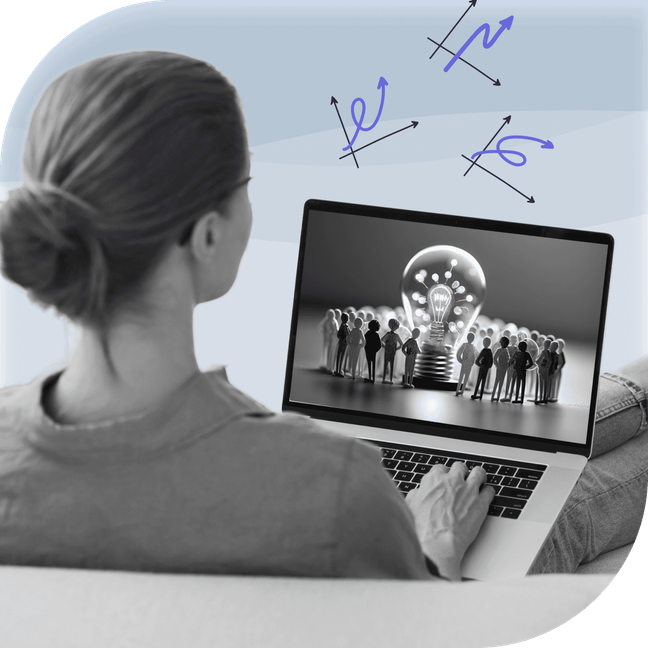GenAI (Generative Artificial Intelligence)

Generative artificial intelligence (GenAI) is AI that responds to prompts, with models learning the structure and patterns of inputted training data to generate new data with similar characteristics. Content created with GenAI should have human characteristics, be coherent, and be complex. For advanced uses in HR, GenAI can sort, summarize, analyze, and interpret data.
GenAI can use generative models to produce any of the following:
- Text, including predictions and insights
- Images
- Sounds
- 3D models
- Animation
- Other data types
The effectiveness of incorporating GenAI into HR practices varies and can be controversial depending on the specific application of the technology. GenAI has an inherent susceptibility to repeat or amplify present biases in the training data. For this reason, GenAI usage is becoming increasingly regulated by bodies such as the EU, which labels AI use in certain applications as “high risk.” Concerns include the impact of GenAI on individual rights and freedoms, economic stability, and society as a whole.
The U.S. Equal Employment Opportunity Commission (EEOC) hasn’t offered strategic guidance on the use of GenAI in hiring. However, the EEOC has laid out a few core principles to keep in mind. For example, the commission reminds employers that AI software should be used as a tool, with employees relying on other processes to ensure hiring is unbiased and equitable. Also, the EEOC notes that AI technology evolves rapidly, emphasizing the importance of cautiously exploring new processes.
Examples of Generative AI use in HR
GenAI is versatile and can produce complex content in academic or scientific terms or simplified content that is easier to understand. GenAI can be useful for:
- Predictive analytics for talent acquisition: GenAI can be used to analyze historical data for predicting the success of potential hires. Also, data points such as skill sets, past job performance, and educational accomplishments can provide insights into a candidate’s likelihood of success in roles.
- Individualized employee development plans: Organizations can use GenAI to analyze an employee’s skills, career goals, and performance reviews. This analysis helps to align a worker’s goals with the objectives of an organization.
- Employee turnover prediction: GenAI can be used to identify factors that play a role in employee turnover, allowing HR to address issues like employee dissatisfaction proactively. Equally important, GenAI can identify flight risks among employees or identify workers who are at high risk of leaving the company.
- Automated onboarding: This can be used to streamline the onboarding process for new hires with personalized schedules, personalized training programs, document management, and real-time feedback mechanisms.
- Support chatbot: Chatbots can be used to provide technical assistance. For HR purposes, chatbots can initiate real-time communication for screening interviews or inquiries about job postings. Also, potential employees might use chatbots to ask common questions about an employment opportunity.
Related Terms
Generative AI
is a term used interchangeably with Generative Artificial Intelligence and GenAI.
GAI
is an acronym used interchangeably with Generative Artificial Intelligence and GenAI.
Generative Models
are statistical models that can generate new data instances.
Creative AI
mimics or augments human creativity to produce creative output, including art, music, or literary works.
Procedural Generation AI
is a term that refers to AI that uses algorithms to create data or scenarios. Procedural generation AI is commonly used in gaming and simulations, and this AI can generate complex outputs based on rule sets or algorithms.
Synthetic Media AI
generates realistic content such as videos, images, and audio recordings indistinguishable from human-created content.
Computational Creativity
is a field that studies and develops AI systems that can perform tasks traditionally considered creative.